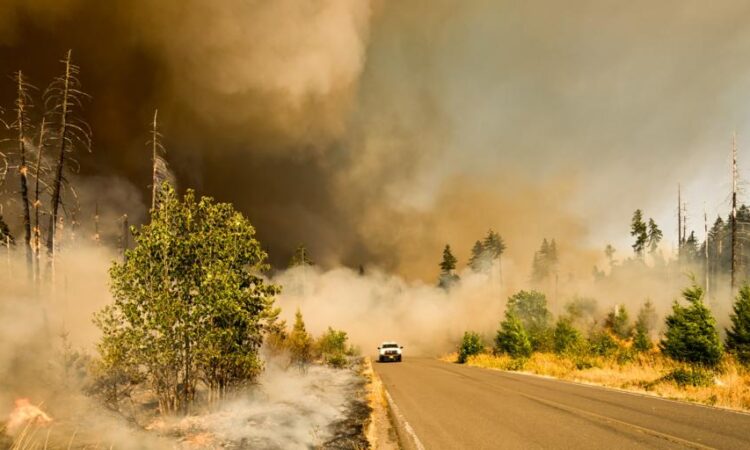Climate-exacerbated wildfires cost the U.S. between $394 to $893 billion each year in economic costs and damages – Climate-exacerbated wildfires cost the U.S. between $394 to $893 billion each year in economic costs and damages

Wildfires represent a growing threat to the health and well-being of communities across the country. The United States has already seen a devastating string of catastrophic wildfires this year in places like Maui, the western United States, and Louisiana as these disasters become more and more damaging due to climate change. This continues a string of deadly wildfire years that make the threat of wildfires to people and the broader economy increasingly clear.
The total cost of wildfires in the United States is between $394 billion to $893 billion each year. This range was calculated by combining estimates from the existing research on the specific costs related to property damage, direct and indirect deaths and injuries, health impacts from wildfire smoke, income loss, watershed pollution, and a range of other factors. Each of these impacts on their own are very costly. Taken together, they represent disastrous consequences for the country.
The total annual economic burden of wildfires in the United States is between $394 billion and $893 billion.
The JEC Democratic Majority’s analysis finds that wildfires in the United States cause between $394 billion and $893 billion dollars in damages annually, which is equivalent to between 2-4% of U.S. GDP. This range is notably higher than existing estimates in the literature, which put the total cost of wildfires at between $87.4 and $427.8 billion in 2022 dollars annually based on a smaller subset of costs. The economic costs in this analysis include: diminished real estate values, lost income, damage to watersheds and aquifers, insurance payouts, timber loss, property and infrastructure damage, electricity costs, evacuation costs, federal wildfire suppression costs, school and learning losses related to wildfires, insurance premium increases, and tourism loss. The health costs of wildfires accounted for in this analysis include direct deaths and injuries from wildfires, costs from short and long-term exposure to wildfire smoke, and psychological costs.
The total cost estimates in this report should be viewed as a likely undercount of the true total cost, as there are several costs connected to wildfires that have not yet been fully quantified by researchers. These additional costs include: how post-fire erosion harms agriculture and makes mudslides and flooding more likely; post-wildfire rehabilitation costs to help burn scars and other parts of the ecosystem recover; and the costs of managed retreat when certain areas become too wildfire prone to live in. Including these effects would push the total cost estimates even higher. Climate change is also likely to increase many of these costs going forward, as wildfires burn longer and produce more smoke, which would further enlarge the total cost of fires.
These significant costs from wildfires motivate continued policy action to reduce the incidence of catastrophic wildfires and address their significant effects on people and the planet.
The immense cost of wildfires—both the human toll and the economic damages—requires government action. At the federal level, investments from the Inflation Reduction Act to combat climate change will cut down on the greenhouse gas pollution that is a root cause of these larger wildfires. Additionally, improving the aging U.S. energy grid, especially through modernized transmission lines, can reduce the risk of wildfires ignited by electricity infrastructure. The newly announced American Climate Corps will also put more than 20,000 young people on career pathways in fast-growing sectors tied to clean energy and climate resilience, including work on forest management that can prevent catastrophic wildfires. These and other preventive measures, such as more prescribed burning, can ultimately make wildfires less damaging; though they will take time to have an effect.
Ensuring that pay for the wildland firefighters who help protect communities from wildfire damage is high enough to recruit and retain those fighting these wildfires will also help curb costs. One clear way to do this is by passing the Wildland Firefighter Paycheck Protection Act, which would codify the temporary pay increase for wildland firefighters included in the Bipartisan Infrastructure Law, which is otherwise set to expire on November 17th. Providing FEMA with additional funds to replenish its dwindling relief funds, and giving the Agency increased flexibility in how it deploys funds, would help communities better recover from these increasingly severe and costly wildfires.
For more information about the methods used in this report, read the full text below.
